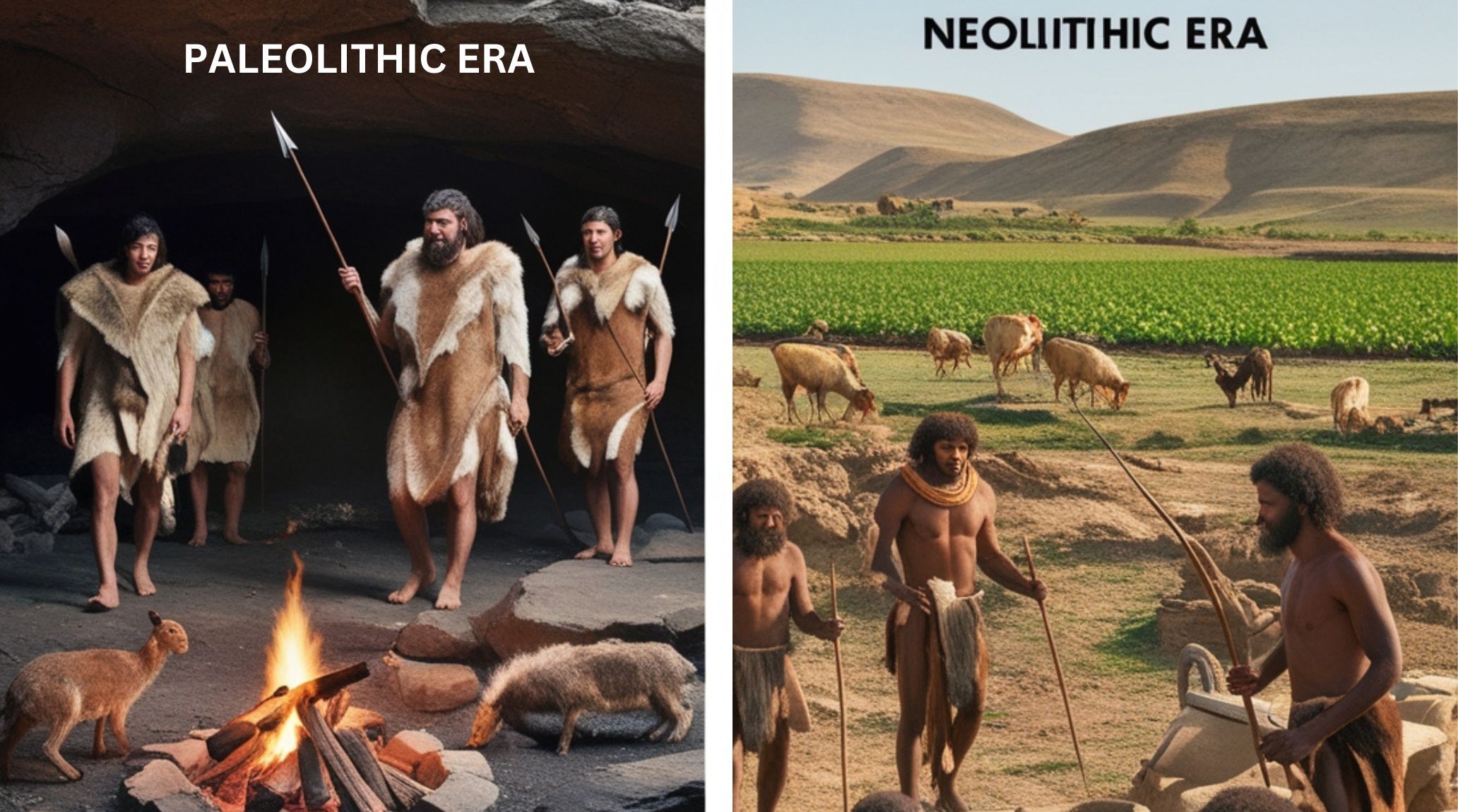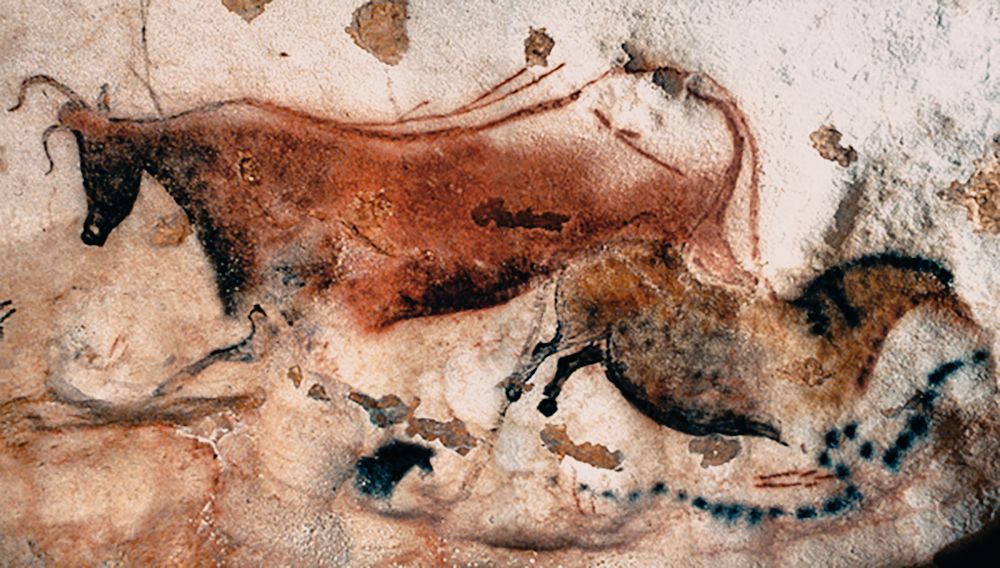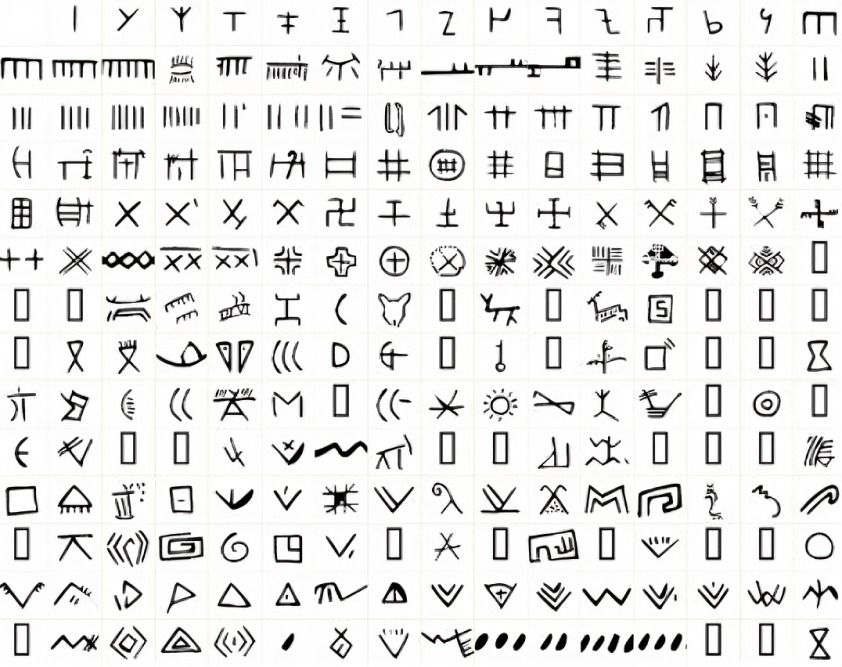
“
Understanding the differences between the Paleolithic and Neolithic eras offers insight into human evolution and societal development. This blog explores fascinating Paleolithic Era vs. Neolithic Era Facts that highlight significant transformations in tools, culture, and daily life. 1
1
1
”
The Paleolithic Era, often called the Old Stone Age, spanned about 2.5 million years and was characterized by nomadic hunter-gatherer societies that relied on stone tools for survival and adaptation.1
In contrast, the Neolithic Era, known as the New Stone Age, emerged around 10,000 BCE, marked by the advent of agriculture, which led to settled communities and the domestication of animals.2
Paleolithic people lived in small, mobile groups, typically consisting of extended families, moving frequently in search of food, while Neolithic societies established permanent settlements, fostering social and cultural development.3

Art and culture flourished during the Paleolithic Era, evidenced by intricate cave paintings, carvings, and personal ornaments, showcasing early humans' creativity and symbolic thought.
The Neolithic Era saw the emergence of more complex social structures, including the development of leadership roles, trade networks, and specialized crafts, as communities became larger and more interconnected.4
During the Paleolithic Era, people primarily hunted large game, like mammoths and bison, whereas Neolithic diets diversified to include cultivated crops and domesticated animals, leading to more stable food sources.5
The transition from the Paleolithic to the Neolithic Era was gradual, occurring over thousands of years and marked by climatic changes that encouraged the shift from hunting to farming.6
Spirituality in the Paleolithic Era often revolved around animism and shamanistic practices, while Neolithic societies developed more organized religions, with rituals centered around agricultural cycles and fertility.7

Communication in the Paleolithic Era relied on simple gestures and vocalizations, but Neolithic communities developed early forms of writing, enabling record-keeping, trade, and knowledge sharing.
The Paleolithic lifestyle required extensive knowledge of the environment, promoting a deep understanding of flora and fauna, while Neolithic advancements allowed people to manipulate their surroundings for agricultural purposes.8
As Neolithic communities grew, they often faced challenges like resource competition and social stratification, leading to conflicts and warfare, contrasting with the generally egalitarian nature of Paleolithic groups.9
The Paleolithic Era featured a nomadic lifestyle that fostered a strong connection with nature, while the Neolithic Era’s sedentism often resulted in environmental alterations, like deforestation and soil depletion.10
During the Paleolithic Era, communal decision-making was crucial for survival, whereas the Neolithic Era began to see the emergence of hierarchical structures and governance within growing settlements.11
The rise of agriculture in the Neolithic Era led to population surges, with estimates suggesting significant increases compared to the smaller, more dispersed populations of the Paleolithic hunter-gatherers.12
The invention of the plow during the Neolithic Era revolutionized farming, allowing for increased efficiency and crop yields, whereas Paleolithic methods relied on gathering and hunting, limiting food production.13

Paleolithic tools were primarily simple stone implements, such as hand axes and scrapers, while Neolithic innovations included polished stone tools and pottery, significantly advancing technology and daily life.
The social dynamics of the Paleolithic Era emphasized cooperation and shared resources, while Neolithic communities faced the complexities of property ownership and wealth accumulation, altering social relationships.14
The introduction of trade in the Neolithic Era facilitated the exchange of goods and ideas between communities, enhancing cultural diffusion, unlike the self-sufficient nature of Paleolithic societies.15
Evidence suggests that Neolithic people engaged in the selective breeding of plants and animals, leading to the cultivation of species suited for agriculture, a practice unknown in the Paleolithic Era.16
The invention of pottery in the Neolithic Era transformed food storage and cooking methods, allowing for more efficient meal preparation compared to the basic food handling methods of Paleolithic societies.17


